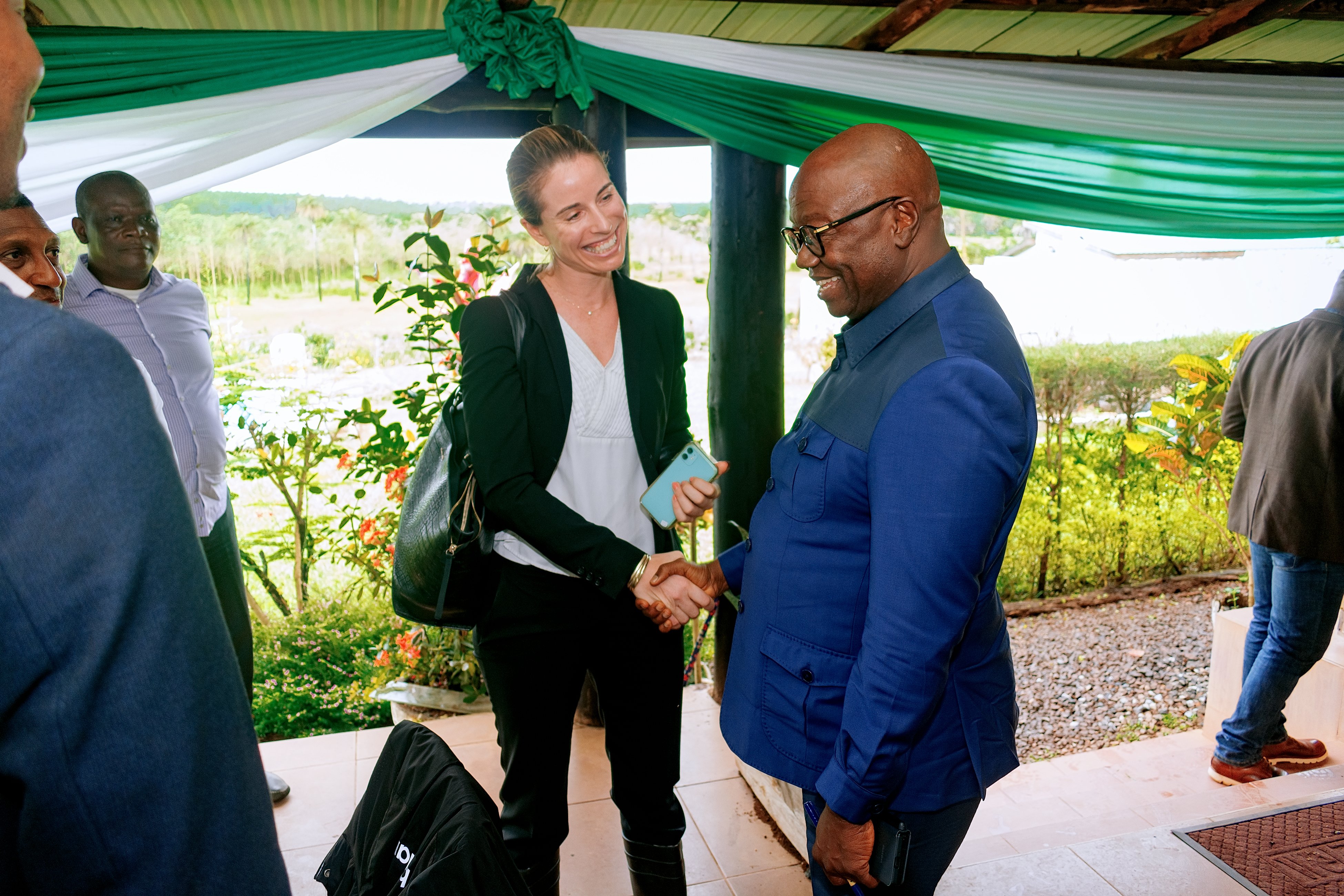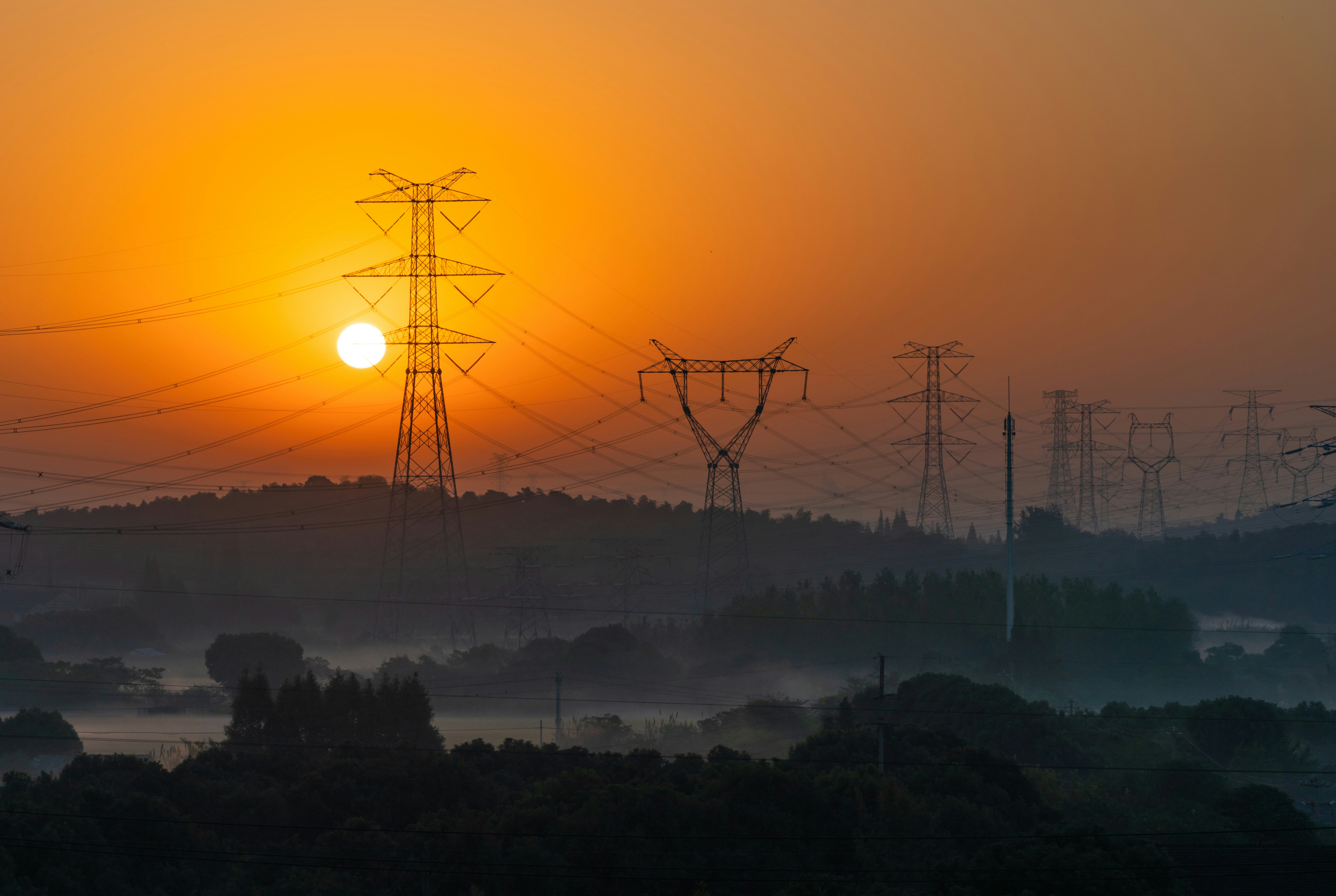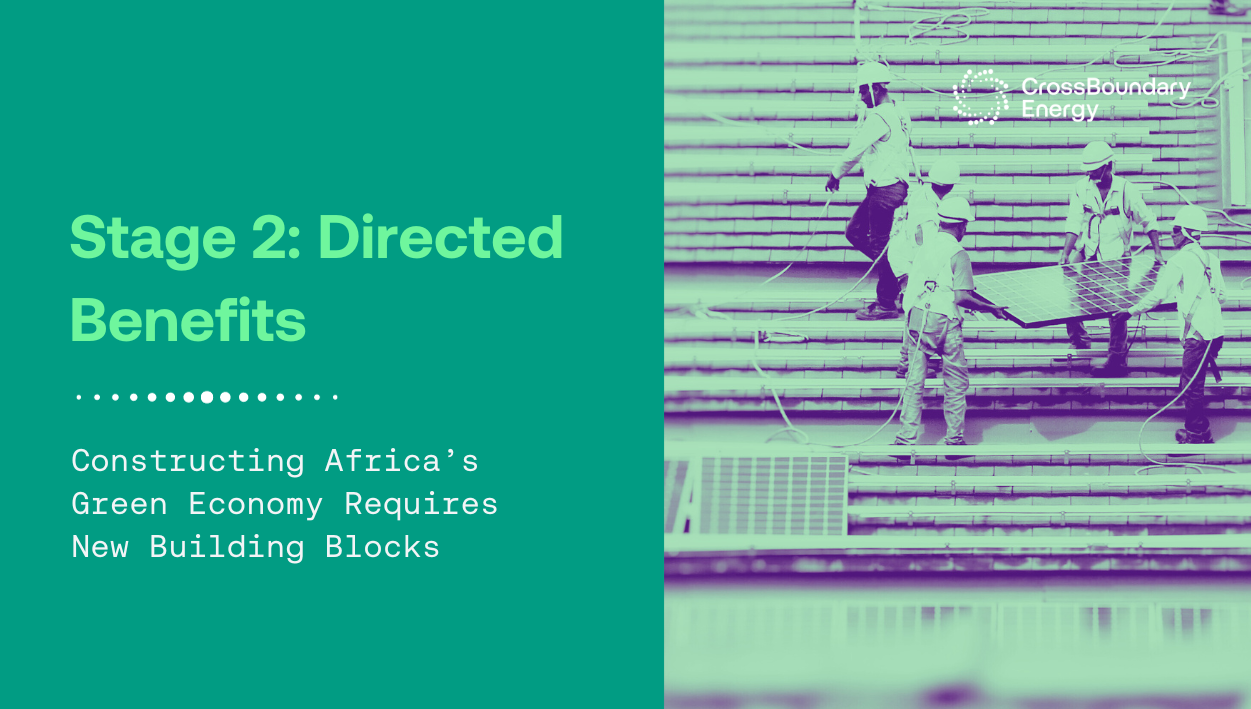
Constructing Africa’s Green Economy Requires New Building Blocks
African regulators face an exciting opportunity: the chance to leapfrog legacy energy market structures, and accelerate the integration of distributed energy resources. In doing so, they can boost grid integrity, create green jobs, and define a new and cleaner path to industrialization.
It is hard to overstate just how important this opportunity is. World Bank research continues to cite access to energy as a primary barrier to boosting firm productivity in Africa. In their latest survey of firms across the continent, nearly 80% of participating companies report experiencing power outages while 41% cited energy access as a major obstacle to business operation.
Meanwhile, industrial and agricultural energy demand in Sub-Saharan Africa is estimated by the IEA to grow by almost 40% by 2030. The sectors that can help reduce the continent’s import burden—cement and steel manufacturing in particular—require reliable and affordable power. Africa’s mining sector is also set for unparalleled growth, driven by the projected boom in global demand for green minerals.
And yet, utilities from Malawi to South Africa have instituted indefinite load shedding after delaying critical infrastructure upgrades for years. Distribution companies from Ghana to Kenya are proposing rate hikes of up to 20% to continue funding unreliable energy service delivery. Most African utilities are loss-making and unable to maintain existing assets or invest in new ones. To plug the gap, African treasuries are forced to use public funding that could instead be spent on health care or education.
In response, resourceful African industrials have doubled down on their traditional strategy of self-generating the power they need. The IFC estimates that privately owned diesel generators account for approximately 135 GW of power in Sub-Saharan Africa, or about twice the regional grid capacity (excluding South Africa). Customers spent nearly US$20 billion a year on fuel alone for their back-up generators.
The prohibitive costs of diesel generators and the steady push for decarbonization are encouraging businesses to adopt a different distributed energy resource: solar arrays. Electricity supplied from renewable energy technologies—particularly solar energy—is often cheaper than grid-supplied energy. When combined with storage solutions, renewable DERs can be made more reliable than what is on offer from the national grid. By “going green”, African business leaders are simply taking more control over their energy supply, through the cheapest means available.
The prospect of affordable distributed generation replacing costly diesel self-supply, has understandably alarmed some centralized power providers that are already in financial straits. In this fast-evolving landscape, energy regulators in almost all African countries find themselves called upon to deliver competing objectives: hold back the market forces driving distributed energy resources for long enough to revitalize insolvent centralized electricity suppliers, all while extending customers access to fairly priced, accessible electricity.
The utility death spiral in Africa has accelerated to a critical point. Cynics say this is a breaking point. At CrossBoundary Energy (CBE), we see an opportunity for evolution. The speed, and degree, of Africa’s sustainable economic transition will ultimately be set by how policymakers adapt their markets to the emergence of distributed energy resources (DERs).
Put simply, African economies must adopt DERs, or they will become uncompetitive as businesses choose to go elsewhere. Our experience developing these projects across the continent has given us an insider’s view of how dozens of countries are moving through this transition, as well as the opportunities and challenges they face at different stages of their journey.
For instance, some are adopting a more customer-centric and integrated market approach, and in these markets the private sector is demonstrating the value that DERs can provide, namely: alleviating pressure on the grid, and expanding industry’s access to reliable, affordable power. Embedded, but distributed, projects are feeding surplus, clean power into the grid, while companies are offering new solutions to grid stability issues. DERs are even funding network upgrades by delivering long-distance, wheeled power to multiple commercial customers. Forward-leaning utilities are innovating and building for the future, introducing electric vehicle fleets and/or rolling out internet services to commercial customers. Contrary to popular wisdom, innovation and collaboration in the energy sector is emerging.
In this paper, which we first shared as a series, we will propose an Africa-centric framework for regulators and energy sector leaders to examine each other’s experiences of integrating distributed energy resources into a future-facing energy sector. We will provide a view of the options available to energy sector leaders and utilities, which form the basis of new strategies to integrate DERs into electricity markets.
Wherever possible, CrossBoundary Energy has brought to bear our direct experience of designing, financing, developing, building, owning, and operating distributed generation projects across Sub-Saharan Africa. As one of the first and largest dedicated commercial and industrial solar developers on the continent, we have been at the forefront of regulatory engagement to increase businesses’ access to reliable, affordable, clean energy.
CrossBoundary Energy was also one of the first companies to successfully license solar power purchase agreements (PPAs) for our clients in Kenya, Ghana, Nigeria, Somalia, and Sierra Leone. Additionally, we are actively engaging regulators in many other markets including Rwanda, Egypt, Uganda, Tanzania, Botswana, Tunisia, Guinea, Mali, Uganda, Mozambique, the DRC, South Africa, and Zimbabwe. In each of these markets, we have studied the regulatory environment and specific legislation, regulation, and policy that may impact the benefits DERs are able to offer businesses and the national economy.
The stages of DER policy evolution we have observed and will explore as part of this series are as follows:
Centralized Control (Stage 0): Markets that are largely closed to DERs and governed by command-and-control regulation. Integrated energy planning is limited. Though an independent energy regulator may have been established, there is a high degree of utility involvement in energy policymaking. Read more about Stage 0 here.
Cautious Co-existence (Stage 1): Markets that are defined by incentive-based regulation. Regulators and governments are starting to study the DER market as the first projects move forward. More sophisticated energy planning is occurring, though the State continues to intervene unpredictably. Opaque initial rules can result in an uneven playing field for market participants. Read more about Stage 1 here.
Directed Benefits (Stage 2): Markets in which there is regulatory predictability, independence, and a fairer playing field on which DER projects are being developed. Robust and accurate data collected by regulators about the sector starts to influence policy design. This wealth of technical information, when shared with DER providers, enables the State to consider how to allow the nascent market greater freedom to operate—within boundaries. Integrated energy sector planning is becoming more sophisticated, and utilities are accounting for innovation. Regulators and governments still play an active role in overseeing DER investment and directing its benefits. Read more about Stage 2 here.
Early Market Management (Stage 3): Market-based regulation is being explored. DERs are more fully integrated into the electricity supply industry. The market is starting to direct benefits, instead of the State or regulators. Through participation in regional power trading, aggregation of DERs, and providing open access to transmission infrastructure, regulators are learning lessons to prepare for a transition to wholesale energy markets. Read more about Stage 3 here.

The case examples we explore across each of these stages are playing out in real-time. In this series, we will identify the key policy and regulatory building blocks of integrated, DER-inclusive, energy market development. We will look at the actions African regulators and policymakers are taking as examples of these principles in practice. We also will highlight the actions that are impeding or even reversing sector evolution and blocking countries from extracting the benefits from DERs.
By drawing lessons from their counterparts at similar levels of energy evolution, the continent’s energy policymakers can act more like physicians: they can diagnose the problem accurately and prescribe the right treatments at the right time to gradually introduce a new, healthier state of being. In doing so, they can contribute to a more stable and economically vibrant Africa.
Thank you to our contributor to this series:
“Distributed energy resources (DERs) powering industry is one of the most exciting and understudied trends in the renewable energy space in Africa today. CrossBoundary Energy’s pioneering work in the field provides a unique opportunity to catalog learnings driven by active market shaping. These learnings should be of critical interest to regulators, governments, industry, and researchers tracking the fast-changing energy dynamics on the continent. As the private sector takes an increasingly prominent role in Africa’s energy security, unpacking the differentiated pathways towards the energy landscape of the future will be critical to fostering a just transition that promotes rapid and sustainable economic growth.”

Samuel Miles, Renewable and Appropriate Energy Lab, UC Berkeley
Advice to African policymakers and energy regulators on the integration of distributed energy resources (DERs) often lacks appropriate context and nuance. Recommendations for new regulations are not sufficiently defined by when they should best be introduced. Suggestions for policy reforms often fail to recognize the structural dynamics of specific energy markets or the way in which sectors are being governed.
This series hopes to break this trend by providing concrete guidance to policymakers, regulators, and energy sector officials on which policy building blocks should be selected and deployed at different stages of electricity market evolution. Maximizing the benefits while controlling the risks of DER integration, rests on using the right tool for the problem and doing so at the right time.
We use case studies to illustrate the stages when certain regulatory reforms are most practical. Our focus is on the African context, where the stakes for effective DER integration are highest and where regulators are most hungry for more targeted, relevant advice. To provide actionable ideas to energy sector leaders, we have focused on the policy elements we consider to be most important.
Further work will of course be required to adapt these principles to the specific sector and governance realities of individual markets. It is our hope that this series, and the publication that will follow, will trigger healthy sector discussion about these “next steps.”
We also welcome further debate about where policy for DERs has succeeded and where it has fallen short. We would especially like to hear from those closest to the challenge of providing more reliable, affordable energy for African industry.
In this series, we consider distributed energy resources (DERs) to be generation in all forms and in all sources that is owned and operated by a private entity. These resources may include but are not limited to electric storage resources (thermal and renewable), distributed generation (both thermal and renewable), and energy efficiency applications.

For the purposes of this series, we will exclude from our definition other forms of DERs including electric vehicles and their charging infrastructure (including vehicle-to-grid), mini-grids and solar home systems (SHS), energy efficiency measures like smart thermostats, and thermal energy systems like ice storage. While these are important technologies for the global energy transition, our focus is on clean energy for the purposes of green industrialization and broad-based economic growth.
The benefits of DERs, or distributed generation (DG), were well defined by the US Federal Energy Regulatory Commission and the Department of Energy (DOE). A series of papers outline the benefits of integrating DG into the modern electric system. These include supplementing grid power supply during periods of peak demand, improving power quality, and providing ancillary services.
In an African context, DERs generation can deliver significant benefits to multiple market actors:


So, what building blocks must be in place to realize these benefits and control for any risks?
There are three cornerstones of energy regulation which must be considered at any stage of this journey:
Primary energy sector legislation establishes a market’s structure and dictates the rights and responsibilities of sector entities. Changes to primary legislation take time to develop and enact as they usually involve significant work of both the legislative and executive arms of government. Once enacted though, primary legislation can dramatically change how an energy sector is governed while expanding the role the private sector is afforded.
Integrated resource planning is crucial for all countries looking to build modern energy systems and transition away from fossil fuels. When done well, policymakers ensure that long-term sector planning accounts for all aspects of energy demand and supply. Data-driven forecasts allow energy planners to calculate trade-offs and determine the most cost-effective approach to meeting energy needs. Effective integration of DERs is greatly benefited by robust and accurate integrated energy planning.
Financial sustainability of utilities. When utilities are underperforming, the temptation to hold back DERs will be stronger—as was the case in Ghana and Senegal when short-term PPA moratoriums were imposed to the detriment of industry and renewable energy targets. In Uganda by contrast, Umeme’s strong balance sheet helped introduce new regulatory space for DER projects. Uganda’s new Electricity Law amendment (2022) introduced private sector participation in generation and distribution of electricity and effectively rolled back the utility’s monopoly in rural areas. As DER penetration increases in any market, it is crucial that reforms aimed at improving the financial sustainability of utilities are happening in parallel. The World Bank underscores, for example, tariff adjustments, reduction of technical and commercial losses, and improvements in metering and billing collection as examples of what has worked in public utility reform. Financially viable utilities are in a much better position to make way for DERs and the benefits they provide.
Primary sector legislation, integrated resource planning, and utility performance and viability impact DER integration in any market. They are therefore foundational. As African energy markets evolve, however, the choice of additional building blocks which regulators can deploy widens significantly. Through informative country case studies, we will consider this range of policy and regulatory instruments. Continuing in this series, we will provide suggestions on when they should be deployed in order maximize DER benefits while mitigating the risks presented by increased DER penetration.
This is the first part of a white paper on the regulatory building blocks for distributed energy resources (DER) written by CrossBoundary Energy. Read about Stage 0: Centralized Control here. Download the full white paper.





